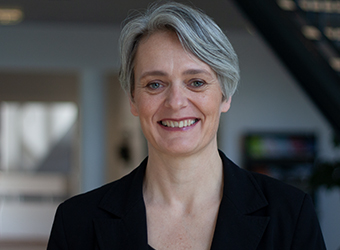Available in:
Karin Christiansen is a Senior Associate Professor at the Faculty of Health, VIA University College in Denmark. She is research leader at the Programme for Health Technology, Methodology Development and Ethics, VIA Research Centre for Health and Welfare Technology. She is a renowned expert in the field of ethics in welfare services and has conducted multiple studies on the subject. Recent studies include “Ethics and use of technology in health care professions”, “Policy and philosophical implications of the ageing demographic revolution” and “Dementia, technology and health ethics”. In her research, she operates close to the practical level, which has given her a unique insight into the key questions and complexities surrounding the field.
Karin will be one of the keynote speakers of our Conference in Hamburg where she will be talking about the major implications of the use of technology for the social workforce.
a) How is the introduction of technological tools impacting the work of the social services workforce in terms of their professional identity and responsibility?
KC: The introduction of technologies such as social robotics in the social and health care sector will most likely have profound effects on the self-understanding of the professional and their duties and responsibilities towards the person using social services. In order to steer the development in the right direction, we will have to discuss what constitutes a caretaker or companion and what changing notions of “care’ implies to both caregivers and receivers. We will have to debate, who can be held responsible, when we use algorithms to predict people’s risk behavior or health status – and make mistakes. And we will have to discuss in what areas human judgment and imagination are absolutely crucial to our decisions and in which areas they are not. Answers to these questions will have strong impact on the future division of labor and responsibility. Therefore, it is important to have a broad dialogue in our society about these normative questions.
b) How can technology facilitate partnerships between different professionals and the people using services?
KC: As an example, tele-care is used widely in Denmark to facilitate communication between health professionals (doctors and nurses at hospitals or day-clinics) and people in their own homes. Studies show that some health professionals (such as nurses) consider consultations via the computer to be more focused and efficient than a home visit, while other professionals highlight the fact that tele-care only mediates a one-dimensional view of the client. Many older people find it convenient that they can engage with the professionals from their private homes, instead of having to go to hospital. It saves them time and a lot of effort. For some people, having the technology “in-house’ increases their sense of autonomy, personal agency and independence, while others experience it as an added burden of responsibility that they have to adopt a new technology and monitor their own health continuously, while feeling sick. The facilitation of good relationships between different professionals and people using services depend on the wise application of technology, which is always considering the specific person’s physical, mental, social, cultural, educational and economic resources.
c) What can be done to empower service users in the transition towards the use of technological tools in social work?
KC: In order to empower service users in the transition towards the use of technological tools in social services, actual or potential users should be offered education in digital literacy and assistance in using technology and “translating’ the signs and sounds of the computer or technical device. Obviously, this kind of education has to be adjusted to the particular needs and resources of the service users and might require training a taskforce of digital “mediators’. Research shows that the fear of making technical mistakes prevents some older people from using digitally mediated technologies and prevents them from gaining access to health professionals, various health services, patient groups, family and potential partners. Peer-to-peer education is often a good remedy against those kinds of fear and insecurity and obviously civil society plays an important role in creating the social infrastructure for such initiatives. Greater empowerment and sense of ownership can also be achieved by involving people using services directly in the design and development of various technologies, taking into consideration their actual needs, desires, values and goals. Collaborative learning initiatives between service users, important stakeholders and developers has to be developed and implemented to reach that objective.
